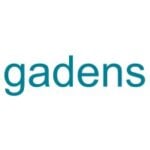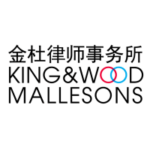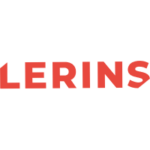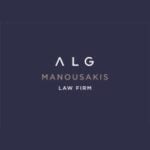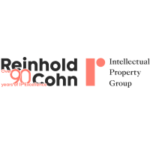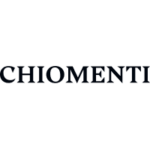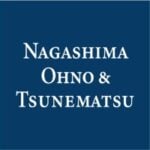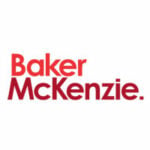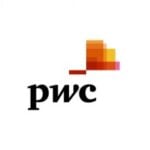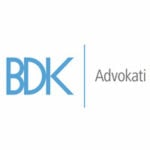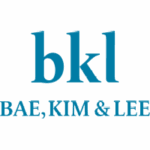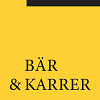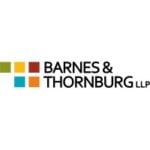-
Please briefly summarize your country's legislative framework for medicinal products (including biologicals), medical devices, food, and food supplements
- The life sciences industry in Singapore is regulated by the Health Sciences Authority (HSA),1 operating under the oversight of the Singapore Ministry of Health (MOH). Regulation of health products such as pharmaceuticals, cosmetics and medical devices fall under the purview of the HSA.
- The regulatory framework for medicinal and other health-related products consists of the Health Products Act 2007 (HPA), the Medicines Act 1975 (MA), the Medicines (Advertisement and Sale) Act 1955, the Poisons Act 1938 and the Sale of Drugs Act 1914.
- The HPA governs the regulation of therapeutic products, medical devices, cosmetic products and cell, tissue and gene therapy products. The MA regulates medicinal products (such as complementary health products, including traditional medicines, homeopathic medicines and quasi-medicinal products). The Poisons Act regulates specific substances (excluding use in medicines supplied by medical practitioners),2 whereas the Sale of Drugs Act regulates the sale of any substance or mixture of substances used as a medicine.
- Food and supplements of a food nature (including food-based complementary health products) fall under the purview of the Singapore Food Agency (SFA) and are regulated under the Sale of Food Act 1973.
- Classification of a product as a food or health product will depend on various factors such as whether the product appears to be part of a daily diet, taken as supplement to a diet, or taken for medicinal purposes.3 If there is ambiguity in classifying a product as a food or health product, clarification should be sought from either the HSA or the SFA.
Footnote(s):
1 A body established under the Health Sciences Authority Act 2001.
2 The Schedule (Poisons List) to and Section 7 of the Poisons Act.
-
With regards to medicinal products and medical devices, how is the regulatory process structured in your jurisdiction from R&D through market approval until post-marketing vigilance, and what rules does it follow? Please briefly describe.
Medicinal and Therapeutic products
- The regulatory regime classifies relevant products into the following categories:
- Medicinal products used to treat or prevent disease, to diagnose disease, for contraception, to induce anaesthesia, etc.;4
- Medical devices used for the diagnosis, prevention, monitoring, treatment or alleviation of disease not through pharmacological, immunological or metabolic means;5
- Therapeutic products used for a therapeutic, preventive, palliative or diagnostic purpose that is constituted by certain specified chemical and biological active ingredients, etc.;6
- Cell, tissue and gene therapy products (CTGT);7 and
- Complementary health products, including Chinese proprietary medicines and traditional medicines.8
- For the clinical trial of medicinal products, a Clinical Trial Certificate (CTC) in accordance with the Medicines Act is still necessary.9 Under the CTC regime for medicinal products, a sponsor is mandatory.10 Insurance must be maintained to provide for compensation in the event of injury or loss.11
- The Health Products (Clinical Trials) Regulations 2016 sets out the assessment regime for clinical trials of therapeutic products and Class 2 CTGT products. The product licence holder must put in place a system to ensure responsibility and liability for its products on the market and be able to take appropriate action, if necessary. Under the HPA12 and MA,13 the HSA has the power to suspend, revoke or vary licences. A licence may be revoked at the request of the licence holder, or if the HSA is satisfied that there is an infringement of a patent, or if there was fraud or misrepresentation in the application process. Further, there is a duty to maintain records and report defects and adverse effects under the Health Products (Therapeutic Products) Regulations 2016. Every manufacturer, importer, supplier or registrant of a therapeutic product must report the defect to the HSA as soon as it is identified.14
- For Chinese proprietary medicine, dealers must obtain approval from the HSA prior to the import, export, sale or supply of Chinese proprietary medicine pursuant to the Medicines Act.15 Traditional medicines (e.g., traditional Malay and Indian medicines), homeopathic medicines and health supplements are not subject to pre-marketing approval or licensing for their import, manufacture or sale in Singapore. Dealers and sellers of this category of medicines are responsible for ensuring their safety and quality.16
Medical devices
- A CTC is not necessary for studies assessing the safety, performance or effectiveness of a medical device.17 Prior approval by each institution’s institutional review board (IRB) is, however, still required.18 The Health Products (Medical Device) Regulations (HP(MD)R) also regulate the use of medical devices in clinical trials.19
- The HPA and HP(MD)R require medical devices, other than those exempted in the aforesaid regulations, to be registered with the HSA prior to being placed on the Singapore market. There are four risk classes for the classification of general medical devices.20
- All medical devices must be evaluated by the HSA. The HSA must be satisfied of two
criteria before registering a medical device: (1) that the overall intended benefits of the medical device outweigh the overall risks; and (2) based on the conformity of the medical device with the safety and performance requirements set out on the HSA’s website, that the medical device is suitable for its intended purpose and that any risk associated with its use is minimised.21 Requirements under all applicable legislation22 for the supply and use of any medical devices must also be met. - Additionally, for medical practitioners, the Aesthetic Practice Oversight Committee (APOC) Guidelines set out the minimum level of competence required for the operation of certain medical devices in aesthetic procedures.23
Footnote(s):
4 Section 3 of the Medicines Act 1975.
5 Paragraph 1 of the First Schedule to the HPA.
6 Paragraph 3 of the First Schedule to the HPA.
7 Paragraph 5 of the First Schedule to the HPA.
8 Paragraph 3(2) of the First Schedule to the HPA.
9 Clinical Trials Guidance: Determination of Whether a Clinical Trial Requires Clinical Trial Authorisation (CTA), Clinical Trial Notification (CTN) or Clinical Trial Certificate (CTC) (1 March 2021) – Determination of whether a clinical trial requires a CTA, CTN or CTC at Paragraph 1.2.2.; See also Section 18 of the MA, and the Medicines (Clinical Trials) Regulations 2016.
10 Regulation 4(1) of Medicines (Clinical Trials) Regulations 2016 and Regulation 4(1) of Health Products (Clinical Trials) Regulations 2016.
11 Regulation 9(2) of Medicines (Clinical Trials) Regulations 2016.
12 Section 27 of the Health Product Act 2007.
13 Section 16 of the Medicines Act 1975.
14 If the defect leads to a serious threat to personal or public health, it must be reported within 48 hours. All other product defects must be reported within 15 days. See Regulation 34 of the Health Product (Therapeutic Products) Regulations 2016.
15 Section 5 of Medicines Act 1975.
16 See https://www.hsa.gov.sg/traditional-medicines/overview.
17 Clinical Trials Guidance: Determination of Whether a Clinical Trial Requires Clinical Trial Authorisation (CTA), Clinical Trial Notification (CTN) or Clinical Trial Certificate (CTC) (1 March 2021) – Determination of whether a clinical trial requires a CTA, CTN or CTC at Paragraph 1.3.2.
18 Clinical Trials Guidance: Determination of Whether a Clinical Trial Requires Clinical Trial Authorisation (CTA), Clinical Trial Notification (CTN) or Clinical Trial Certificate (CTC) (1 March 2021) – Determination of whether a clinical trial requires a CTA, CTN or CTC at Paragraph 1.2.1.
19 Regulations 3A, 4C, 5B, 10A, 13A, 39A and 39B of Health Products (Medical Device) Regulations 2010.
20 Third Schedule to the Health Products (Medical Devices) Regulations 2010; Medical Device Guidance – Guidance on Medical Device Product Registration (August 2021) at Paragraph 2.
21 Regulation 25 of the Health Products (Medical Devices) Regulations 2010.
22 For example, the Medical Registration Act 1997, Dental Registration Act 1999, Radiation Protection Act 2007, etc. See www.hsa.gov.sg/content/hsa/en/Health_Products_Regulation/Medical_Devices/Overview.html.
23 Aesthetic Practices Oversight Committee, Guidelines on Aesthetic Practices for Doctors 2016.
- The regulatory regime classifies relevant products into the following categories:
-
What is the regulatory process for food supplements, from first notification to the competent authorities until post-marketing vigilance in your country, and what regulations are applicable here? Please briefly describe.
- Food and supplements of a food nature (including food-based complementary health products) fall under the purview of the SFA and are regulated under the Sale of Food Act 1973. Food importers have to ensure that their products comply with SFA’s regulations and labelling requirements pursuant to the Food Regulations.24 Contravention of the Food Regulations may attract fines.
Footnote(s):
24 https://www.sfa.gov.sg/food-import-export/general-classification-of-food-food-products.
-
What are the ongoing obligations in your country after a marketing authorization for medicinal products has been obtained or a conformity assessment been carried out for medical devices?
- The product licence holder for therapeutic products must put in place a system to ensure
responsibility and liability for its products on the market and be able to take appropriate action, if necessary. For therapeutic products, the duty to maintain records and report defects and adverse effects is now required by legislation. Every manufacturer, importer, supplier or registrant of a therapeutic product must report the defect to the HSA as soon as it is identified.25 - A valid permit from HSA is required for the advertisement and sale of the medicinal products.26 A permit applicant must ensure that all advertised information is correct and truthful.27 Prior to publishing any advertisement or sales promotional material, the advertiser must ensure that the advertisement or sales promotional material is in compliance with the permit. The advertisement or sales promotional material should not be amended without seeking prior approval from HSA. The valid permit number must also be included in the advertising and promotional materials.28
- Registrants of medical devices are required to notify the HSA of any changes to particulars provided in relation to the registration of the medical devices, or changes that may affect the safety, quality or efficacy of a registered medical device.29 In addition, registrants must report any defects or adverse effects that occur in connection with the medical device. The HSA may also suspend or cancel the registration of a health product (including medical devices) if there is suspicion of fraud or misrepresentation in the first instance or safety concerns in the use of the health product.30
Footnote(s):
25 If the defect leads to a serious threat to personal or public health, it must be reported within 48 hours. All other product defects must be reported within 15 days. See Regulation 34 of the Health Product (Therapeutic Products) Regulations 2016.
26 Part 5 of the Medicines Act 1975; see also Medicines (Medical Advertisements) Regulations 2000.
28 Guidance for Industry: Guide on Advertisements and Sales Promotion of Medicinal Products (2 April 2019).
29 Regulation 49 of the Health Products (Medical Devices) Regulations 2010.
30 Medical Device Guidance: Guidance on Licensing for Manufacturers, Importers and Wholesalers of Medical Devices (July 2023) at Paragraph 8.
- The product licence holder for therapeutic products must put in place a system to ensure
-
Which are the competent national authorities having the regulatory oversight over medicinal products, medical devices, food, and food supplements and what are their respective responsibilities?
- The HSA operates under the oversight of MOH, and is responsible for regulating the life sciences industry in Singapore. Therapeutic products, medical devices, cosmetic products and cell, tissue and gene therapy products fall under the purview of HSA.
- As for food and food supplements, these are regulated by the SFA.
-
Please briefly describe the procedure of challenging regulatory decisions (e.g., denial of marketing authorization) made by the competent regulatory authority in relation to medicinal products, medical devices, and food supplements.
- For the registration of therapeutic31 and Class 2 CTGT32 products, the applicant will be notified of one of the following outcomes after evaluation: approval, approvable, non-approvable, rejection. “Approvable” indicates that there are minor deficiencies for the applicant to address and rectify within a specified period. “Non-approvable” means that there are major deficiencies that need to be addressed by the applicant. A “rejection” notice means that the applicant had failed to address the major deficiencies, and the application is taken as withdrawn. A “rejection” notice is final.
- For Chinese proprietary medicine, an applicant for a dealer’s licence must first obtain an in-principle approval for Chinese proprietary medicine product listing (CPM product listing).33 The application for CPM product listing can be approved, rejected, or resubmitted with further clarifications.34
Footnote(s):
32 See https://www.hsa.gov.sg/ctgtp/registration/overview/evaluation-regulatory-decision.
33 See https://www.hsa.gov.sg/chinese-proprietary-medicines/dealers-licence/apply.
34 Guidelines on Chinese Proprietary Medicines Product Listing (January 2025), See https://www.hsa.gov.sg/docs/default-source/hprg-tmhs/chinese-proprietary-medicines/pl_fsc_guidelines.pdf.
-
Please briefly describe the legal framework and the relevant regulatory procedure (e.g., application process, requirements, approval, denial) that applies in your jurisdiction to clinical trials for medicinal products and medical devices.
- For the clinical trial of medicinal products, a CTC in accordance with the Medicines Act is necessary.35 Under the CTC regime for medicinal products, a sponsor is mandatory.36 Insurance must be maintained to provide for compensation in the event of injury or loss.37
- The Health Products (Clinical Trials) Regulations 2016 sets out the assessment regime for clinical trials of therapeutic products and Class 2 CTGT products. The product licence holder must put in place a system to ensure responsibility and liability for its products on the market and be able to take appropriate action, if necessary. Under the HPA38 and MA,39 the HSA has the power to suspend, revoke or vary licences. A licence may be revoked at the request of the licence holder, or if the HSA is satisfied that there is an infringement of a patent, or if there was fraud or misrepresentation in the application process. Further, there is a duty to maintain records and report defects and adverse effects under the Health Products (Therapeutic Products) Regulations 2016. Every manufacturer, importer, supplier or registrant of a therapeutic product must report the defect to the HSA as soon as it is identified.40
- A CTC is not necessary for studies assessing the safety, performance or effectiveness of a medical device.41 Prior approval by each institution’s IRB is, however, still required.42 The Health Products (Medical Device) Regulations also regulate the use of medical devices in clinical trials.43
Footnote(s):
35 Clinical Trials Guidance: Determination of Whether a Clinical Trial Requires Clinical Trial Authorisation (CTA), Clinical Trial Notification (CTN) or Clinical Trial Certificate (CTC) (1 March 2021) – Determination of whether a clinical trial requires a CTA, CTN or CTC at Paragraph 1.2.2.; See also Section 18 of the MA, and the Medicines (Clinical Trials) Regulations 2016.
36 Regulation 4(1) of Medicines (Clinical Trials) Regulations 2016 and Regulation 4(1) of Health Products (Clinical Trials) Regulations 2016.
37 Regulation 9(2) of Medicines (Clinical Trials) Regulations 2016.
38 Section 27 of the Health Product Act.
39 Section 16 of the Medicines Act.
40 If the defect leads to a serious threat to personal or public health, it must be reported within 48 hours. All other product defects must be reported within 15 days. See Regulation 34 of the Health Product (Therapeutic Products) Regulations 2016.
41 Clinical Trials Guidance: Determination of Whether a Clinical Trial Requires Clinical Trial Authorisation (CTA), Clinical Trial Notification (CTN) or Clinical Trial Certificate (CTC) (1 March 2021) – Determination of whether a clinical trial requires a CTA, CTN or CTC at Paragraph 1.3.2.
42 Clinical Trials Guidance: Determination of Whether a Clinical Trial Requires Clinical Trial Authorisation (CTA), Clinical Trial Notification (CTN) or Clinical Trial Certificate (CTC) (1 March 2021) – Determination of whether a clinical trial requires a CTA, CTN or CTC at Paragraph 1.2.1.
43 Regulations 3A, 4C, 5B, 10A, 13A, 39A and 39B of Health Products (Medical Device) Regulations 2010.
-
Is there a public database for clinical trials in your country, and what are the rules for publication?
- There is a Clinical Trial Registry which is a public database for clinical trials in Singapore.44 The Clinical Trial Registry is managed by HSA, and lists only ongoing clinical trials in the HSA application database. The information in the Clinical Trials Register is updated by the local sponsors at least once every six months.45
Footnote(s):
44 See https://eservice.hsa.gov.sg/prism/ct_r/enquiry.do?action=getAllTherapeuticArea.
45 See https://www.hsa.gov.sg/clinical-trials/clinical-trials-register.
-
Please briefly summarize the rules that must be observed in your jurisdiction when using data from clinical trials?
- Under the Human Biomedical Research Act 2015, appropriate consent of a person must be obtained prior to participation as a research subject.46 There is a duty on the recipient of individually-identifiable information or human biological material to take all reasonable steps and safeguards to protect such information.47 There are also strict restrictions on the re-identification of anonymized information, and on the disclosure of human biological material.48
- Further, the disclosure of personal data obtained from research may also constitute an offence under the Personal Data Protection Act 2012.49 There are certain exceptions allowing the disclosure of personal data for research purposes.50 Even so, the exceptions stipulate that the identity of the individual should not be identifiable as a result of the disclosure / publication.
Footnote(s):
46 Section 24 of the Human Biomedical Research Act 2015.
47 Section 27 of the Human Biomedical Research Act 2015.
48 Part 5 of the Human Biomedical Research Act 2015.
49 Part 9B of the Personal Data Protection Act 2012.
50 Part 3 of Schedule 2, Personal Data Protect Act 2012.
-
Are there any trends and/or legislative proposals in your country on digitizing the process of conducting clinical trials (e.g., digitalization of the application process, decentralization of clinical trials)?
- The process for applying for clinical trials has already been digitized. All clinical trial applications must be made online through the HSA portal, “PRISM”.51 The portal also allows a user to track the application status.
- It is likely that there will be a greater shift towards digitizing the process of conducting clinical trials in the near future, especially given the move towards digitization of healthcare services.
- The Singapore Clinical Research Institute (SCRI) launched a ClinicalTrials. SG (CTSG) portal in 2024. The CTSG) is a comprehensive centralised clinical trials portal for patients and caregivers, clinical investigators, and clinical trial sponsors. It helps to make information about clinical trials more accessible for the public.52 SCRI is the national academic clinic research organisation appointed to coordinate and implement the national clinical trials strategies; it is part of a consortium supported by the Ministry of Health.53
Footnote(s):
51 See https://www.hsa.gov.sg/clinical-trials/application/apply-cta-ctn.
53 See https://www.scri.edu.sg/about-us/about-scri/, https://www.cris.sg/our-programmes/scri/.
-
What are your country's legal requirements for the authorization of manufacturing plants for medicinal products, medical devices, food, and food supplements? Please briefly describe.
- A valid licence from the HSA is required for the manufacturing of health products and medicinal products under the HPA and MA, respectively.54
- For medical devices, an ISO 13485 certificate for finished medical device manufacturing is required to obtain a manufacturer’s licence. Additionally, a manufacturer of medical devices must comply with the requirements set out in HSA website.55
- For manufacturing plants for food and food supplements, a licence is required to set up a food processing establishment. There are also specific conditions of licensing for food establishments.56 Before even applying for the licence to set up a food processing establishment, the organisation must also have a valid registration with the Accounting and Corporate Regulatory Authority under the Business Registration Act.57
Footnote(s):
54 Section 12 of the Health Products Act 2007 and Section 6(2) of the Medicines Act 1975.
55 Regulation 33 of the Health Products (Medical Devices) Regulations 2010. See also https://www.hsa.gov.sg/medical-devices/regulatory-overview.
57 See https://www.sfa.gov.sg/food-manufacturers/setting-up-food-establishments.
-
Please briefly describe the typical process of distributing medicinal products, medical devices, and food supplements in your country, encompassing, if applicable, the wholesale distribution of products.
- Any person (except for licensed manufacturers) must apply to HSA for the relevant wholesaler’s licence for the resale of registered therapeutic products. A licensee for a therapeutic product must appoint a responsible person to ensure compliance with the HSA’s good distribution practice (GDP).58
- Any person (except for licensed manufacturers) must apply to HSA for a wholesale dealer’s licence for medicinal products.59 The licence for medicinal products will only be granted if the company has been audited and found to comply with the HSA’s GDP.
- Any person (except for licensed manufacturers) must apply to HSA for the relevant wholesaler’s licence for the resale of medical devices.60 With regard to medical devices, a wholesaler must comply with the HSA’s GDP for medical devices certificate or ISO 13485 certificate with the scope for storage and distribution.61 A licensed local manufacturer does not require a wholesaler’s licence from HSA to supply, by wholesale, any medical devices it manufactures.
Footnote(s):
58 Guidance notes on duties of responsible persons named in the importer’s licence and wholesaler’s licence (November 2024) at Paragraph 4. For duties and responsibilities of responsible persons, see Regulation 39 of the Health Products (Therapeutic Products) Regulations 2016.
59 Ibid.
60 See https://www.hsa.gov.sg/about-us/health-products-regulation.
61 Medical Device Guidance: Guidance on Licensing for Manufacturers, Importers and Wholesalers of Medical Devices (July 2023) at Paragraph 5.5.
-
Please briefly describe the pricing and reimbursement rules, if any, for medicinal products, medical devices, and food supplements in your jurisdiction?
- Although prices of therapeutic products and medical devices are generally not regulated by the government, public sector hospitals generally purchase medicinal products through the Group Procurement Office (GPO). The aim of the GPO is to keep healthcare costs affordable by adopting prudent procurement strategies.62
- Apart from a national medical savings scheme (Medisave) and a health insurance scheme for Singapore citizens and permanent residents (Medishield Life),63 patients receive drug subsidies based on their paying status and the scheme under which the drug is covered (e.g., the Standard Drug List and Medication Assistance Fund).64 Subsidised drugs cover up to 90 per cent of the total volume of public medication prescriptions and are reviewed and updated regularly by the MOH.65 Subsidies are also provided for medical devices, such as implants.66
- Various schemes have also been implemented to provide further assistance to the lower income patients and elderly in healthcare and other living expenses. In 2012, the MOH introduced the Community Health Assist Scheme (CHAS).67 The CHAS scheme is intended to provide subsidies for medical and/or dental services at participating clinics. The amount of subsidy received by the patient varies based on their assessed “CHAS category”, which is dependent on their household income level. The medical and/or dental practitioners will then submit a claim for reimbursement of the subsidy. In subsequent years, various other subsidy schemes for lower income seniors to help them cope with rising healthcare and medical insurance premiums have been launched, including the Pioneer Generation Package in 201468, the Merdeka Generation Package in 201869, and the Majulah Package in 2023.70 In 2024, the MOH made further changes to improve patient affordability in healthcare costs, including revising the monthly Per Capita Household Income (PCHI) thresholds to allow more Singaporeans to benefit from the subsidies, enhancing the Palliative Care subsidy framework; and enhancing the Community Hospital subsidy framework.71
- Health technology assessments are carried out by the Healthcare Technology Assessment (HTA) Unit under the auspices of the MOH. As part of its health technology assessments, the HTA Unit carries out reviews and cost-effectiveness analyses, and develops clinical practice guidelines in Singapore.72 MOH also regularly reviews and adds to the list of subsidised drugs which are assessed to be clinically effective and cost effective.73
Footnote(s):
62 See https://www.singhealth.com.sg/about-singhealth/procurement/Pages/About-Us.aspx.
63 Medisave allows Singaporean Citizens or Permanent Residents to set aside part of their income for future medical expenses. See https://www.moh.gov.sg/managing-expenses/schemes-and-subsidies/medisave/. MediShield Life is a basic health insurance plan, administrated by the Central Provident Fund Board, which helps to pay for hospital bills and selected costly outpatient treatments such as dialysis and chemotherapy for cancer. See https://www.moh.gov.sg/managing-expenses/schemes-and-subsidies/medishield-life/.
64 See https://www.moh.gov.sg/managing-expenses/schemes-and-subsidies/list-of-subsidised-drugs/. However, note that some drugs are only subsidised for specific, appropriate clinical indications for which the drugs are assessed to be clinically effective and cost-effective.
65 See https://www.moh.gov.sg/managing-expenses/schemes-and-subsidies/list-of-subsidised-drugs/ and https://www.straitstimes.com/forum/letters-on-the-web/list-of-subsidised-drugs-reviewed-regularly.
67 See https://www.moh.gov.sg/healthcare-schemes-subsidies/community-health-assist-scheme.
68 See www.pioneers.sg/en-sg/Pages/Overview.aspx.
72 Khoo Ai Leng, Formulary Management – A Practical Guide (1st edition, NHG Pharmacy & Therapeutics Office 2014).
73 https://www.moh.gov.sg/news-highlights/details/cost-of-medicines-and-improving-affordability.
-
What legislative framework applies to the advertising for medicinal products, medical devices, and food supplements in your country?
- A valid permit from HSA is required for the advertisement and sale of the medicinal products.74 A permit applicant must ensure that all advertised information is correct and truthful.75 Advertisements for medicinal products must not claim to prevent, alleviate or cure certain diseases or conditions specified in the First Schedule to the MA.76 Prior to publishing any advertisement or sales promotional material, the advertiser must ensure that the advertisement or sales promotional material is in compliance with the permit. The advertisement or sales promotional material should not be amended without seeking prior approval from HSA. The valid permit number must also be included in the advertising and promotional materials.77
- This is similarly provided for in the Health Products (Advertisement of Therapeutic Products) Regulations 2016 in relation to advertisements for therapeutic products.
- Advertisements and promotions of medical devices also do not require prior approval from the HSA, but such advertisements must not be false or misleading, and must be capable of verification by objective evidence, pursuant to the HP(MD)R.78 Further, if the medical device is found to be “professional use only”, i.e. “a medical device that is to be used on an individual solely by, or under the supervision of, a qualified practitioner”, advertisement of the same can only be circulated among qualified practitioners.79
- Advertisements of food supplements also do not require prior approval from the HSA, but such advertisements must not be false, misleading or deceptive, or is likely to create an erroneous impression.80
Footnote(s):
74 Part 5 of the Medicines Act 1975; see also Medicines (Medical Advertisements) Regulations.
76 Section 51 read with the First Schedule to the Medicines Act 1975 for medicinal products, Regulation 6 read with the Second Schedule to the Health Products (Advertisement of Therapeutic Products) Regulations 2016. The list of diseases and conditions in both Schedules are the same.
77 HSA Guidance for Industry “Guide on Advertisements and Sales Promotion of Medicinal Products” 2 April 2019.
78 Regulation 19 of the Health Products (Medical Device) Regulations 2010.
79 Regulation 21 of the Health Products (Medical Device) Regulations 2010.
80 Regulation 9 of the Food Regulation.
-
What laws apply to patents and trademarks for medicinal products, medical devices, and food supplements in your country?
- The relevant legislation for patents and trademarks in Singapore for medicinal products, medical devices and food supplements are the Patents Act 1994, Patents (Medicinal Health Products) Rules 2016, Trade Marks Act 1998 and Trade Marks Rules.
-
Please briefly describe how patent infringements in relation to medicinal products and medical devices are addressed in your jurisdiction, including possible defense strategies and legal proceedings against patent infringements.
- Claims for patent infringement are heard in the General Division of the High Court of Singapore. This includes patent infringements in relation to medicinal products and medical devices.81
- Some possible defences to claims for patent infringements are to challenge the validity of the patent, and/or the claimant’s standing to bring the claim for patent infringement.
- For example, in a 2023 case82, the Plaintiffs alleged that the Defendant had infringed two of their patents by inter alia distributing a pharmaceutical drug. The Defendants challenged the validity of the patents for lack of novelty, lack of inventive step and insufficiency of particulars. The High Court found that one of the patents was invalid as there was a lack of an inventive step; but upheld the validity of the other patent. However, the High Court found that the Plaintiffs had failed to show how the Defendant’s manufacturing process constituted an infringement of the patent. Separately, the High Court also allowed the Defendants’ defence that the 2nd Plaintiff had no standing to bring a claim against them, as there was no evidence that the 2nd Plaintiff had an exclusive licensee agreement.
- Similarly, in a Court of Appeal case83, the Appellant claimed against the Defendant for patent infringement in respect of a drug Lovastatin. In defence, the Defendant challenged the validity of the patent. Upon reviewing the patent, the Court of Appeal held that the patent was invalid as it lacked an inventive step. Notably, the Court held that what the appellants had achieved in the patent was a discovery and not an invention, the former not being patentable.
Footnote(s):
81 Order 69 rule 2 of the Rules of Court 2021.
82 Millenium Pharmaceuticals and Zyfas [2023] SGHC 360.
83 Merck & Co Inc v Pharmaforte Singapore Pte Ltd [2000] SGCA 39.
-
Does your jurisdiction provide for restrictions on the use of trademarks for medicinal products, medical devices, food, and food supplements?
- The use of and application for registration of trademarks for medicinal products, medical devices, food and food supplements have to be in compliance with the Trade Marks Act 1998, Trade Mark Rules and other subsidiary legislation.
-
Please briefly describe the product liability regime for medicinal products, medical devices, and food supplements in your country.
- The regulatory regime does not provide special liability or compensation schemes in relation to medicinal products or medical devices. Accordingly, compensation for injuries arising from medicinal products and medical devices derive from common law or statute.84 Civil proceedings for product liability claims have been commenced successfully by individual claimants against the manufacturers and distributors of medical products and medical devices.85 Although rare, representative proceedings are also possible.86
Footnote(s):
84 For example, Section 14 of the Sale of Goods Act 1979 or Section 6 of the Consumer Protection (Fair Trading) Act 2003.
85 TV Media Pte Ltd v De Cruz Andrea Heidi and another appeal [2004] 3 SLR(R) 543.
86 Under Order 4, Rule 6 of the Rules of Court Singapore 2021.
-
Please provide a short overview of risks of liability (criminal liability, serious administrative / civil liability) and enforcement practice with regards to medicinal products (including biologicals), medical devices, foods, and food supplements.
- Each of the relevant statutes have specific provisions for offences and/or penalties for contravention of the respective statutory provisions. For example, under the Medicines Act, a person who contravenes the licensing, manufacturing, and wholesaling of medicinal products can be found guilty of an offence, liable upon conviction to a fine or to imprisonment, or to both.87
- Likewise, contravention of the provisions under the Human Biomedical Research Act 2015 will also attract various penalties.
- The Medicines Act, Poisons Act and/or Health Products Act have provisions to deal with offenses in respect of medicinal products.
- In the whole of 2023, the HSA seized more than 60,000 units of illegal health products and removed over 4,600 online listings on local e-commerce and social media platforms selling these illegal health products. This seizure came about through a concerted internet-based enforcement action coordinated by INTERPOL.88 In 2024, the HSA removed 3,336 illegal health product listings and issued 1,471 warnings to sellers on local e-commerce and social media platforms. Prescription only and pharmacy only medicines made up about 40% of all listings removed. The suppliers in the more serious cases were also prosecuted by HSA, and were fined and/or sentenced to jail. HSA will continue its efforts to strengthen surveillance through collaboration with the local e-commerce and social media platform administrators.89
- In addition to seizure of illegal products, HSA may also order recall of products which are found to be in contravention of the relevant requirements. For example, in November 2023, HSA made a recall order for a health supplement known as “Royce Red Yeast Rice & CoQ10” as it was found to contain Lovastatin above allowable limits.90 More recently in January 2024, HSA made a recall order for a specific batch of Bilaxten (Bilastine) Tablet 20mg due to absence of printed product information on the product blister.91 It is clear that HSA strictly monitors the various products being supplied in the market.
- Contravention of the Sale of Food Act and its subsidiary legislations may attract a penalty of a fine. For example, on 6 December 2023, a bakery was fined $3,000 for food safety lapses under the Sale of Food (Non-Retail Food Business) Regulations.
Footnote(s):
87 Section 20 of the Medicines Act 1975.
88 See https://www.hsa.gov.sg/announcements/press-release/hsa-opspangea2023.
90 See https://www.hsa.gov.sg/announcements/product-recall/royce-red-yeast-rice-coq10.
91 See https://www.hsa.gov.sg/announcements/product-recall/recall-of-bilaxten-(bilastine)-tablet-20mg.
-
Does your jurisdiction provide for a specific legislative and regulatory framework for digital health applications (e.g., medical apps)? If yes, please briefly describe the relevant framework.
- Under the Health Products Act, a medical device includes any software that could be used for one or more purposes of “diagnosis, prevention, monitoring, treatment or alleviation of disease”.92
- HSA has issued guidelines stating that “as a general rule, telehealth products intended for medical purposes such as investigation, detection, diagnosis, monitoring, treatment or management of any medical condition, disease, anatomy or physiological process, will be classified as a medical device subject to regulatory controls by HSA”.93 Such telehealth products include software involved in the provision of healthcare services over physically separate environments via infocomm technologies.
- Depending on its function, the digital health application may fall within Class A to Class C. The classification of the digital health application depends on the risk assessment. A Class A software medical device is one that does not measure, analyse or monitor patient parameters, and does not require registration. Registration of the digital health application will be necessary if it is found to be a Class B or Class C medical device.94
Footnote(s):
92 1st Schedule of the Health Products Act 2007.
93 Regulatory Guidelines for Telehealth Products (April 2019).
94 Regulatory Guidelines for Telehealth Products (April 2019).
-
Does your jurisdiction provide for laws or certain legal measures to ensure the supply of medicinal products and medical devices, or are such rules envisaged in the future? If yes, please briefly describe those rules.
- HSA works closely with the MOH and other regulatory authorities to ensure the supply of medicinal products and medical devices.
- For example, during the COVID-19 pandemic, Singapore was the first country in Asia to receive doses of the Pfizer-BioNTech COVID-19 vaccine. This was a result of a coordinated effort between the government and the life sciences industry partners:95
- In April 2020, shortly after the COVID-19 breakout, the government formed a Therapeutics and Vaccines expert panel to look into potential vaccine candidates globally. The panel was responsible for continuously reviewing the data published on the various vaccine trials. The HSA was the primary institution involved in reviewing the clinical trial data.
- Simultaneously, while the HSA conducted their ongoing review of suitable vaccine candidates, the MOH together with the Economic Development Board negotiated the commercial agreements for the purchase of the vaccines.
- The planning group then roped in Singapore’s national carrier, Singapore Airlines, to plan the delivery schedules and timelines. Extensive efforts were also incurred to secure appropriate cold chain facilities to store the vaccines.
Footnote(s):
95 See https://www.gov.sg/article/how-singapore-is-ensuring-access-to-covid-19-vaccines.
-
Are there any specific compliance standards in your jurisdiction for the marketing of medicinal products and medical devices (e.g., codes of conducts of industry associations, etc.)? If yes, please give a brief overview of the relevant standards.
- The Singapore Association of Pharmaceutical Industries’ Code of Marketing Practices guides the conduct of marketing and promotion of medicinal and therapeutic products in Singapore and serves as the basis for regulation within the industry.96
- The ECEG 2016 also provides guidance to doctors in relation to issues of financial conflicts of interest.97 This includes guidance on arrangements between doctors and third party administrators or insurance companies for payment of referral fees.98
Footnote(s):
96 SAPI Code of Marketing Practices (2016).
97 SAPI Code of Marketing Practices (2016).
98 SMC advisory “Advisory On The Payment Of Fees To Managed Care Companies, Third Party Administrators, Insurance Entities Or Patient Referral Services (“Third Parties”)” issued on 13 Dec 2016.
-
Please state 3-5 key decisions by courts or regulatory authorities that have been issued recently and that are relevant for the life sciences sector.
- In June 2023, the Personal Data Protection Commission imposed a financial penalty on a leading healthcare group and its data outsourcing provider99 after its server was hacked in 2021 and the customer data (identity numbers, telephone numbers, financial details, health information) was found to be put up for sale on the dark web. The server breach impacted more than 150,000 patients, employees, and corporate clients. In addition to the financial penalty, the healthcare group was also directed to, amongst other things, review its internal processes for collection of personal data. The decision underscores the ‘need for organisations to conduct periodic security reviews of their IT systems’.
- In November 2023, the websites of public healthcare institutions in Singapore were subject to an intentional and malicious DDoS attack (distributed denial-of-service attack).100 A DDoS attack disrupts and/or prevents access to a website by flooding the server with unusually high volume of traffic. During this period of time, public users were unable to access the websites of public healthcare institutions. Fortunately, as patient data and information was kept separate from the public healthcare institutions’ private data, the medical practitioners were still able to access patient data and information from the internal servers and continue clinical services and operations undisrupted. This is a positive sign that the public healthcare institutions have implemented protective measures to ensure that patient care is not compromised even when faced with malicious attacks on its external websites.101
- In December 2023, the MOH issued cyber and data security guidelines for healthcare providers to provide guidance on the measures to be put in place for the proper storage, access, use and sharing of health information.102 The guidance constitutes the lead up to a new Health Information Bill, which aims to provide a comprehensive framework governing the safe collection, access, use and sharing of health information across the healthcare ecosystem.103 The Bill is expected to pass in 2025.
- In November 2023, the MOH issued a notice to a healthcare services provider offering cord blood banking services to stop, for a period of up to 6 months (which was extended to a further 3 more months), the “collection, testing, processing and/or storage any new cord blood and human tissues, or provide any new types of tests to patients.”104 This suspension notice comes after the healthcare services provider was found to have certain lapses in their procedures and systems resulting in a few storage tanks exceeding sub-optimal temperatures. The healthcare service provider has been given up to May 2024 to rectify these non-compliances.105 After the MOH was satisfied that these lapses were rectified, MOH issued a notice to the service provider to allow it to resume cord blood banking services in a controlled manner, subject to certain conditions.106 To provide assurance to the public, the MOH also conducted a targeted audit of the other healthcare services providers which offer cord blood banking services.
Footnote(s):
99 See [2023] SGPDPC 5.
102 Cyber and Data Security Guidelines for Healthcare Providers (December 2023).
103 For more information, see the ‘Health Information Bill’ webpage from the Ministry of Health (MOH).
105 See https://www.moh.gov.sg/news-highlights/details/update-on-investigation-of-cordlife-group-limited.
-
What, if any, are the key legal and regulatory trends in your jurisdiction with regards to the digitalization of the local healthcare system and with regards to the use of artificial intelligence in the life sciences sector? Please briefly describe.
- The Singapore government is building the regulatory environment around the provision of digital healthcare.
- Previously, telehealth providers operated under a regulatory sandbox in 2018 (the Licensing Experimentation and Adaptation Programme (LEAP) Regulatory Sandbox). The direct telehealth providers (doctors and dentists offering teleconsultations and organisations that provide such services) are now licensed under the phased implementation of the Healthcare Services Act (HCSA) as of 26 June 2023, specifically Division 2 of the Healthcare Services (Outpatient Medical Service) Regulations 2023.107 Regulatory guidance has been issued on the supply of registered therapeutic products through e-pharmacy, which prescribe requirements for the handling, storing and packing of medication and IT security, among other things.108
- The MOH has been actively carrying out audits to ensure compliance especially in these telehealth services. In 2024, after investigations into suspected breaches of the requirements of teleconsultations, the MOH took regulatory action against a telemedicine provider and issued a notice of intended revocation of its licence. The MOH also referred 41 doctors who were involved in these teleconsultations to the SMC for disciplinary action.109 The MOH, HSA and SMC issued a joint circular reminding telemedicine provider about compliance with the regulations, as well as ethical and professional standards.110 Following this incident, the Health Minister has assured the public that telemedicine regulations remain valid and effective and there is no need for a review of the telemedicine regulations and standards.111
- Developments in artificial intelligence (AI)112 and 3D-printing113 represent the next frontier in healthcare technology. In July 2021, the HSA Medical Devices Branch issued Regulatory Guidelines for 3D-Printed Medical Devices.114 In October 2021, the MOH, the HSA and the Integrated Health Information Systems (IHiS) co-developed the Artificial Intelligence Health Guidelines to guide the safe and ethical development and implementation of AI in the healthcare sector.115 Ethical issues on the deployment of AI and usage of 3D-printing in healthcare will continue to trend. In 2022, the HSA published its revised Regulatory Guidelines for Software Medical Devices (“SMD Guidelines“) and provides clarity on the cybersecurity requirements for a medical device seeking registration. For medical devices incorporating medical technology, the SMD Guidelines set out additional considerations to ensure safety mechanisms, data integrity, validity and reliability.116 In 2023, IHiS signed a Memorandum of Understanding with Microsoft for “deeper collaboration” in generative AI to improve the work experience for healthcare professionals and enhance patient experience.117 This signals an ongoing commitment to developing the AI sphere.
- In 2024, MOH announced that they will be injecting about $200 million over five years into the MOH Health Innovation Fund to support innovations in AI in Singapore’s public healthcare institutions. Further, MOH meted out plans in 2024 to scale the use of Gen AI tools to automate documentation and summarisation of medical records, and for imaging across the healthcare system to improve the quality of care by enabling earlier detection and follow-up on clinically significant signs.118 In addition, to accelerate the deployment of imaging AI across various applications, MOH established AimSG, a single platform through which public hospitals can access imaging AI models from different vendors.119
Footnote(s):
107 Division 2 of the Healthcare Services (Outpatient Medical Service) Regulation 2023; See https://www.moh.gov.sg/licensing-and-regulation/telemedicine.
108 See https://www.hsa.gov.sg/docs/default-source/hprg-ald/guide-mqa-032.pdf; see also https://www.hsa.gov.sg/therapeutic-products/retail-pharmacy-licence/supply-of-registered-therapeutic-products-through-e-pharmacy.
109 Press release, ‘Regulatory Action Against MaNaDr Clinic and Doctors Involved In Potential Professional Misconduct‘, Ministry of Health (24 Oct 2024).
110 MOH Cir 87_2024 Joint Circular on Regulations and Professional Standards for Telemedicine Services and Advertisements (22 Nov 2024).
111 Renald Yeo, ‘Telemedicine regulations remain valid, no review needed despite MaNaDr case: Ong Ye Kung‘, The Business Times (11 Nov 2024).
112 See https://www.ihis.com.sg/healthai.
118 See https://www.moh.gov.sg/newsroom/transforming-healthcare-through-technology.
119 Ibid.
-
Please briefly highlight 3-5 key developments or trends in your jurisdiction with regards to the life sciences sector as you consider them relevant. This may include legislative proposals, market activity, etc.
- In terms of strategic collaborations, Singapore provides diverse partnership opportunities with its public sector research institutes, leading pharmaceutical and biotechnology companies based in Singapore, clinical research units in hospitals, and international research organisations. Companies can also collaborate with scientists in Singapore’s public sector institutes to work on developing new medical technology innovations and applications.
- In addition, the government provides funding in the life sciences industry: for example, S$4 billion was pledged to further health and biomedical sciences research under the Research, Innovation and Enterprise 2020 plan.120 In the Research, Innovation and Enterprise 2025 plan, the government will build on this existing health and biomedical science capabilities through the human health and potential domain, incorporating a new emphasis on furthering human potential.121
- Precision Medicine is a new and evolving field with the potential to transform healthcare through early detection, targeted prevention and personalised care and management of genetic diseases, this will help to reduce diagnostic testing and treatment costs. Interventions and emerging technologies in Precision Medicine include clinical and non-clinical genetic testing, ‘omics’-based biomarkers, pharmacogenomics tests, complex AI-based algorithms, and digital health applications.122 Currently, the licensing of cell, tissue and gene therapy products (“CTGT”) products are regulated under the Health Products (Cell, Tissue and Gene Therapy Products) Regulations 2021, which came into effect on 1 March 2021. The CTGT regulation stipulates that CTGT products can only be supplied for retail sale by a licensed healthcare service provider and administered by a qualified healthcare practitioner.123 Currently, the use and administration of CTGT products are governed by MOH’s Code of Practice, the ‘Standards for the Provision of Clinical Genetic/Genomic Testing (CGT) Services and Clinical Laboratory Genetic/Genomic Testing (LGT) Services’ (‘Standards’).124 The COP was intended to be translated into the Clinical Genetics and Genomics Services (CGGS) Regulations under the new Healthcare Services Act (HCSA) for implementation in 2024 but it has since been deferred to a later date.125
- Gene editing technologies and cell therapy have been shown to result in better therapeutic efficacy, delayed disease progression, and protection against genetically driven diseases.126 Its potential application include in areas of cancer research, neurodegenerative diseases (NDs) and hereditary eye diseases.127 However, the development of genetic testing and cell therapies (including stem cell therapies) face many ethical concerns. The Singapore Bioethics Advisory Committee (‘BAC’) has published a public consultation paper in June 2024 which discusses ethical issues arising from the use of genome editing technologies and cell therapies taking into consideration feedback from relevant stakeholders. The BAC recognises the usefulness of such gene editing technologies but cautions that this must be balanced against concerns regarding the safety and long-term side effects of such therapies. The BAC reiterated the need for compliance with ethical and scientific standards such as those set out in the Human Biomedical Research Act 2015 and each Institutional Review Board (IRB).128 However, BAC recommends that IRBs review the existing guidelines to ensure that these guidelines address the ethical concerns specific to genetic testing and cell therapies, and that sufficient measures are taken to mitigate the safety risks and ethical concerns. BAC also advocates the importance of international guidelines for gene editing and a consistent ethical framework and standards globally.129
- With the increasing interest in the commercial farming of insects for human consumption, the SFA is looking into the need for a regulatory framework to govern this nascent industry and ensure food safety. The SFA first conducted a public consultation on the regulation of insects and insect products in end-2022 and is incorporating feedback to determine the necessary requirements for the import, processing and farming of insects as food in Singapore. In April 2023, SFA said that 16 species of insects – including crickets, silkworms and grasshoppers – will receive the green light for consumption in the second half of 2023, given that the United Nations’ Food and Agriculture Organisation has promoted their benefits as a sustainable form of protein.130 SFA has in late 2024 approved these 16 species of insects as safe for consumption and implemented the insect regulatory framework to provide for safety guidelines for the import, farming and processing of insects into food for human consumption.131
Footnote(s):
120 See https://www.mti.gov.sg/Resources/publications/Research-Innovation-and-Enterprise-RIE-2020.
121 See https://www.nrf.gov.sg/rie2025-plan.
123 Section 22 of the Health Products (Cell, Tissue and Gene Therapy Products) Regulations 2021.
126 Ethical, Legal, and Social Issues arising from Human Nuclear Genome Editing, A Consultation Paper, Bioethics Advisory Committee Singapore (June 2024) at Paragraph 4.6, see https://www.bioethics-singapore.gov.sg/files/publications/consultation-papers/hnge_public_consultation_paper.pdf.
127 Ethical, Legal, and Social Issues arising from Human Nuclear Genome Editing, A Consultation Paper, Bioethics Advisory Committee Singapore (June 2024) at Paragraph 5.3 – 5.5, see https://www.bioethics-singapore.gov.sg/files/publications/consultation-papers/hnge_public_consultation_paper.pdf.
128 Ethical, Legal, and Social Issues arising from Human Nuclear Genome Editing, A Consultation Paper, Bioethics Advisory Committee Singapore (June 2024) at Paragraph 12.10, see https://www.bioethics-singapore.gov.sg/files/publications/consultation-papers/hnge_public_consultation_paper.pdf.
129 Ethical, Legal, and Social Issues arising from Human Nuclear Genome Editing, A Consultation Paper, Bioethics Advisory Committee Singapore (June 2024) at Paragraph 12.12, 12.16, see https://www.bioethics-singapore.gov.sg/files/publications/consultation-papers/hnge_public_consultation_paper.pdf.
131 See https://www.reach.gov.sg/latest-happenings/public-consultation-pages/2022/consultation-on-regulation-of-insect-and-insect-products, see also https://www.sfa.gov.sg/regulatory-standards-frameworks-guidelines/insect-regulatory-framework/local-production-of-insects-for-food-and-for-animal-feed-for-food-producing-animals.
Singapore: Life Sciences
This country-specific Q&A provides an overview of Life Sciences laws and regulations applicable in Singapore.
-
Please briefly summarize your country's legislative framework for medicinal products (including biologicals), medical devices, food, and food supplements
-
With regards to medicinal products and medical devices, how is the regulatory process structured in your jurisdiction from R&D through market approval until post-marketing vigilance, and what rules does it follow? Please briefly describe.
-
What is the regulatory process for food supplements, from first notification to the competent authorities until post-marketing vigilance in your country, and what regulations are applicable here? Please briefly describe.
-
What are the ongoing obligations in your country after a marketing authorization for medicinal products has been obtained or a conformity assessment been carried out for medical devices?
-
Which are the competent national authorities having the regulatory oversight over medicinal products, medical devices, food, and food supplements and what are their respective responsibilities?
-
Please briefly describe the procedure of challenging regulatory decisions (e.g., denial of marketing authorization) made by the competent regulatory authority in relation to medicinal products, medical devices, and food supplements.
-
Please briefly describe the legal framework and the relevant regulatory procedure (e.g., application process, requirements, approval, denial) that applies in your jurisdiction to clinical trials for medicinal products and medical devices.
-
Is there a public database for clinical trials in your country, and what are the rules for publication?
-
Please briefly summarize the rules that must be observed in your jurisdiction when using data from clinical trials?
-
Are there any trends and/or legislative proposals in your country on digitizing the process of conducting clinical trials (e.g., digitalization of the application process, decentralization of clinical trials)?
-
What are your country's legal requirements for the authorization of manufacturing plants for medicinal products, medical devices, food, and food supplements? Please briefly describe.
-
Please briefly describe the typical process of distributing medicinal products, medical devices, and food supplements in your country, encompassing, if applicable, the wholesale distribution of products.
-
Please briefly describe the pricing and reimbursement rules, if any, for medicinal products, medical devices, and food supplements in your jurisdiction?
-
What legislative framework applies to the advertising for medicinal products, medical devices, and food supplements in your country?
-
What laws apply to patents and trademarks for medicinal products, medical devices, and food supplements in your country?
-
Please briefly describe how patent infringements in relation to medicinal products and medical devices are addressed in your jurisdiction, including possible defense strategies and legal proceedings against patent infringements.
-
Does your jurisdiction provide for restrictions on the use of trademarks for medicinal products, medical devices, food, and food supplements?
-
Please briefly describe the product liability regime for medicinal products, medical devices, and food supplements in your country.
-
Please provide a short overview of risks of liability (criminal liability, serious administrative / civil liability) and enforcement practice with regards to medicinal products (including biologicals), medical devices, foods, and food supplements.
-
Does your jurisdiction provide for a specific legislative and regulatory framework for digital health applications (e.g., medical apps)? If yes, please briefly describe the relevant framework.
-
Does your jurisdiction provide for laws or certain legal measures to ensure the supply of medicinal products and medical devices, or are such rules envisaged in the future? If yes, please briefly describe those rules.
-
Are there any specific compliance standards in your jurisdiction for the marketing of medicinal products and medical devices (e.g., codes of conducts of industry associations, etc.)? If yes, please give a brief overview of the relevant standards.
-
Please state 3-5 key decisions by courts or regulatory authorities that have been issued recently and that are relevant for the life sciences sector.
-
What, if any, are the key legal and regulatory trends in your jurisdiction with regards to the digitalization of the local healthcare system and with regards to the use of artificial intelligence in the life sciences sector? Please briefly describe.
-
Please briefly highlight 3-5 key developments or trends in your jurisdiction with regards to the life sciences sector as you consider them relevant. This may include legislative proposals, market activity, etc.
